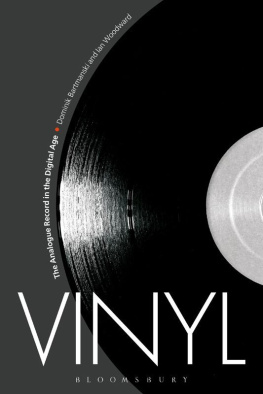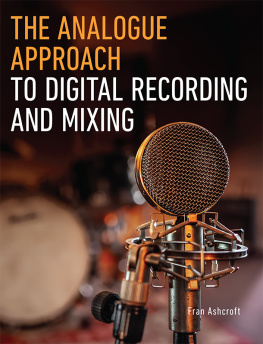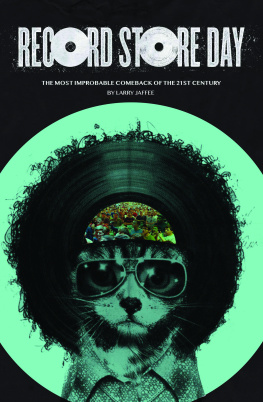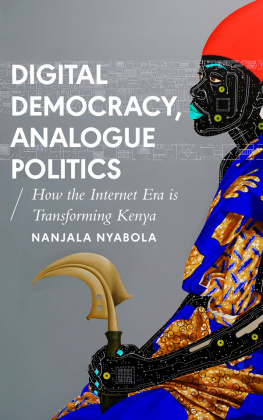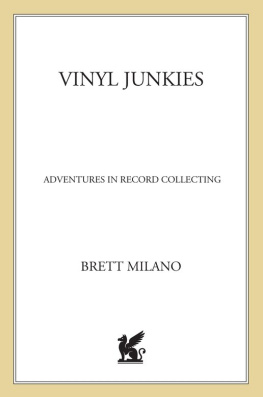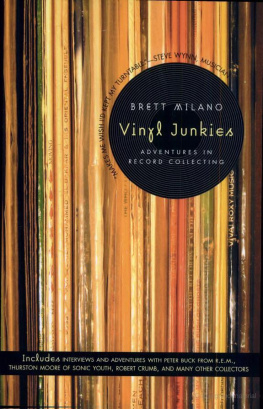Dominik Bartmanski - Vinyl : the analogue record in the digital age
Here you can read online Dominik Bartmanski - Vinyl : the analogue record in the digital age full text of the book (entire story) in english for free. Download pdf and epub, get meaning, cover and reviews about this ebook. year: 2017, genre: Romance novel. Description of the work, (preface) as well as reviews are available. Best literature library LitArk.com created for fans of good reading and offers a wide selection of genres:
Romance novel
Science fiction
Adventure
Detective
Science
History
Home and family
Prose
Art
Politics
Computer
Non-fiction
Religion
Business
Children
Humor
Choose a favorite category and find really read worthwhile books. Enjoy immersion in the world of imagination, feel the emotions of the characters or learn something new for yourself, make an fascinating discovery.
- Book:Vinyl : the analogue record in the digital age
- Author:
- Genre:
- Year:2017
- Rating:3 / 5
- Favourites:Add to favourites
- Your mark:
- 60
- 1
- 2
- 3
- 4
- 5
Vinyl : the analogue record in the digital age: summary, description and annotation
We offer to read an annotation, description, summary or preface (depends on what the author of the book "Vinyl : the analogue record in the digital age" wrote himself). If you haven't found the necessary information about the book — write in the comments, we will try to find it.
Vinyl : the analogue record in the digital age — read online for free the complete book (whole text) full work
Below is the text of the book, divided by pages. System saving the place of the last page read, allows you to conveniently read the book "Vinyl : the analogue record in the digital age" online for free, without having to search again every time where you left off. Put a bookmark, and you can go to the page where you finished reading at any time.
Font size:
Interval:
Bookmark:
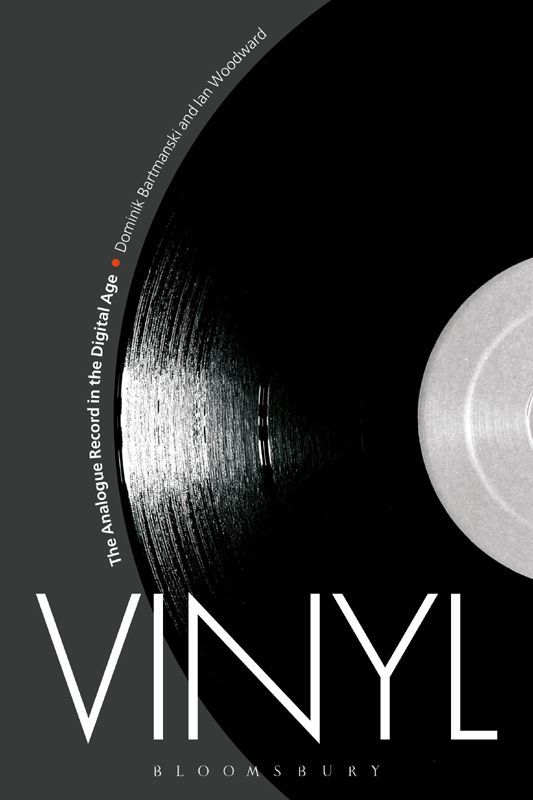
Dominik Bartmanski and Ian Woodward
Bloomsbury Academic
An imprint of Bloomsbury Publishing Plc

Authors: DB Dominik Bartmanski, IW Ian Woodward
Cover: Dominik Bartmanski
A number of factors brought us together to work on this project. The first is a shared love of independent and electronic music, the vinyl medium and record digging. Second is our mutual interest in research on material culture, materiality, iconicity and the cultural dimensions of engagements with objects. Third, despite the distance separating us, we share an intellectual lineage through having Philip Smith as part of our PhD advisory team, and also a common association with Yale Universitys Center for Cultural Sociology (CCS) where Dominik completed his PhD between 2005 and 2011 and Ian is a Faculty Fellow.
Yales CCS and Jeffrey Alexanders pioneering of the iconic turn in cultural sociology has been an inspiring intellectual impulse for our thinking about material culture, but we also wish to acknowledge multiple points of sociological influence provided by many contemporary social scientists, thinkers and artists. Many of these points are evident in the bibliographical selection that forms the concise background of this book. The cultural theory and ethnographic practice of Daniel Miller was particularly important for both of us. But it is also our colleagues who are worth mentioning. Many of the following people have not provided direct assistance with the current work, but have nevertheless contributed to shaping our intellectual framing of the topic, or provided intellectual reassurance along the way. In this regard we wish to thank Andy Bennett, Werner Binder, Shai Dromi, David Ellison, Joe Klett, Michael Emmison, David Inglis, Martina Lw, Raphael Nowak, Philip Smith, Jodie Taylor, Carlo Tognato and Eric Woods.
We are indebted to many people who helped us with a variety of research assistance on the project, comprising tasks such as media searches and interview transcriptions, including Ben Green, Sally Hourigan, Susan Kukucka and Raphael Nowak. For assistance with various organizational and administrative tasks, we would like to thank Christina McKinley and Kimberley Podger, staff at Griffith Universitys Centre for Cultural Research and Hana Czajkowska at Masaryk University. Thanks are also due to Andy Bennett, Director of the Centre for Cultural Research at Griffith, who provided financial support for the project by funding some of the research assistance mentioned above. Csaba Szalo and Radim Marada of Masaryk University provided both institutional help and intellectual reassurance for which we are grateful. Partly this work was supported by the project Employment of Newly Graduated Doctors of Science for Scientific Excellence (CZ.1.07/2.3.00/30.0009) co-financed from European Social Fund and the state budget of the Czech Republic. In addition, when the time came to submit the manuscript, the generosity of Chris Lee from Griffiths School of Humanities in allowing Ian to spend some intensive time at Masaryk University was crucial to timely delivery.
Apart from the extended stint in Berlin to work intensively on collecting interviews and ethnographic material for the book, a good deal of the ethnographic work that was carried out in global settings was undertaken while we were completing other academic duties at meetings and symposia in Buenos Aires, London, Frankfurt, Brisbane, Bogota, Melbourne, New York and Moscow. In all these places we benefited from the help and assistance of locals, but in no place more than in Moscow and Bogota. What would have been impossible to accomplish in terms of visits to key vinyl stores due to these cities size and complexity was made easy by the generosity of friends and colleagues. In Moscow, they were Daria Khlevnyuk, Varvara Kobyshcha, Dmitry Kurakin, Alisa Maximova and Katia Pavlenko. These colleagues drove us around Moscows suburbs, accompanied us on its subways and traipsed Moscows streets in late winter to help us find key vinyl outlets. Not only was the company on these excursions much appreciated, the collective sociological insights generated during these multiple vinyl-related excursions were important to our work. In Bogota, Dominik benefited from the guidance of Maria Alejandra Ochoa and Carlo Tognato. Dominik was also warmly received in London where he discussed the project at its final stages and would therefore like to thank Jeremy Gilbert, Syd Jeffers and Tim Lawrence of the University of East London as well as John Harris from the Guardian, the DJ and producer Colleen Cosmo Murphy, Chris Moffat and the Brilliant Corners crew in Dalston for the special event on vinyl culture in March 2014, which helped crystallize this cultures theory and practice. Importantly we would like to acknowledge our partners, Leanne Morgan and Kathrin Schmitt, who sometimes accompanied us on our ethnographic explorations and excursions, and shared memorable moments during our work in Berlin. Their support and belief in the value of this undertaking has been reassuring.
We would also like to express our deep gratitude towards the staff at Bloomsbury Publishing in London for taking on this project. We are especially thankful for their faith in our work on the material culture of the vinyl record. We found the Bloomsbury team to be exceptional in their professionalism, competence and assistance. Thanks especially to the projects commissioning editors, Louise Butler and Jennifer Schmidt, who oversaw completion of the manuscript, and our editorial assistant at Bloomsbury, Molly Beck. We would also like to thank the two anonymous reviewers for their helpful and timely comments on the first draft of the manuscript.
Last but not least, we want to thank the many people who we interviewed for the project and the many more we talked with during our participant observations and seminars. In particular, we benefited from insightful research conversations with professionals who work directly with vinyl at various stages of its production and consumption, from store owners to pressing plant managers, and vinyl engineers and DJs. Without them sharing their experiences and perspectives the book would hardly exist as much more than predictable media and textual analysis. To the many store owners and to all who keep the vinyl alive and have hosted or guided us during our research and digging excursions, but not participated directly, we thank you.

Those who find beautiful meanings
in beautiful things are the cultivated.
Oscar Wilde
MISE-EN-SCNE
It was a chilly and dark Berlin evening, one of those that make you appreciate the interiors of the city even more. Dominik was finding his way to the newly opened second location of OYE Record Store to meet for an interview with one of the owners. It is rare for an independent shop to create another outlet in the same city, a symptomatic sign of what is a central concern of this book: the resurgence of vinyl in the digital age. It was 8.00 p.m. and the store was about to close, but a few customers were still inside digging. Vinyl is a nocturnal species, and so are many of those who hunt for it. Markus Lindner, who runs this branch of the store in the new bohemian neighbourhood of Neuklln, waited in the back room. Prior to the meeting we had agreed that our interview would not exceed the standard length of one hour. But it flowed so well you did not really want to stop it just because you had discussed your main questions, or because the time was up. The interview turned into a fully fledged conversation with tangential story-telling and, eventually, vinyl playing. Markus, whom we had not known personally before, had a DJ gig that night which restricted his flexibility, but it was not until 11.00 p.m. that we finally closed the store and parted our ways. His generosity was moving, especially in the light of a prosaic but ultimately profound comment that he made about vinyl during the conversation: engaging with music through vinyl today is a kind of luxury, because it requires not only comparatively greater investment of money, but above all quite some time. And time is, after all, the ultimate luxury.
Next pageFont size:
Interval:
Bookmark:
Similar books «Vinyl : the analogue record in the digital age»
Look at similar books to Vinyl : the analogue record in the digital age. We have selected literature similar in name and meaning in the hope of providing readers with more options to find new, interesting, not yet read works.
Discussion, reviews of the book Vinyl : the analogue record in the digital age and just readers' own opinions. Leave your comments, write what you think about the work, its meaning or the main characters. Specify what exactly you liked and what you didn't like, and why you think so.

